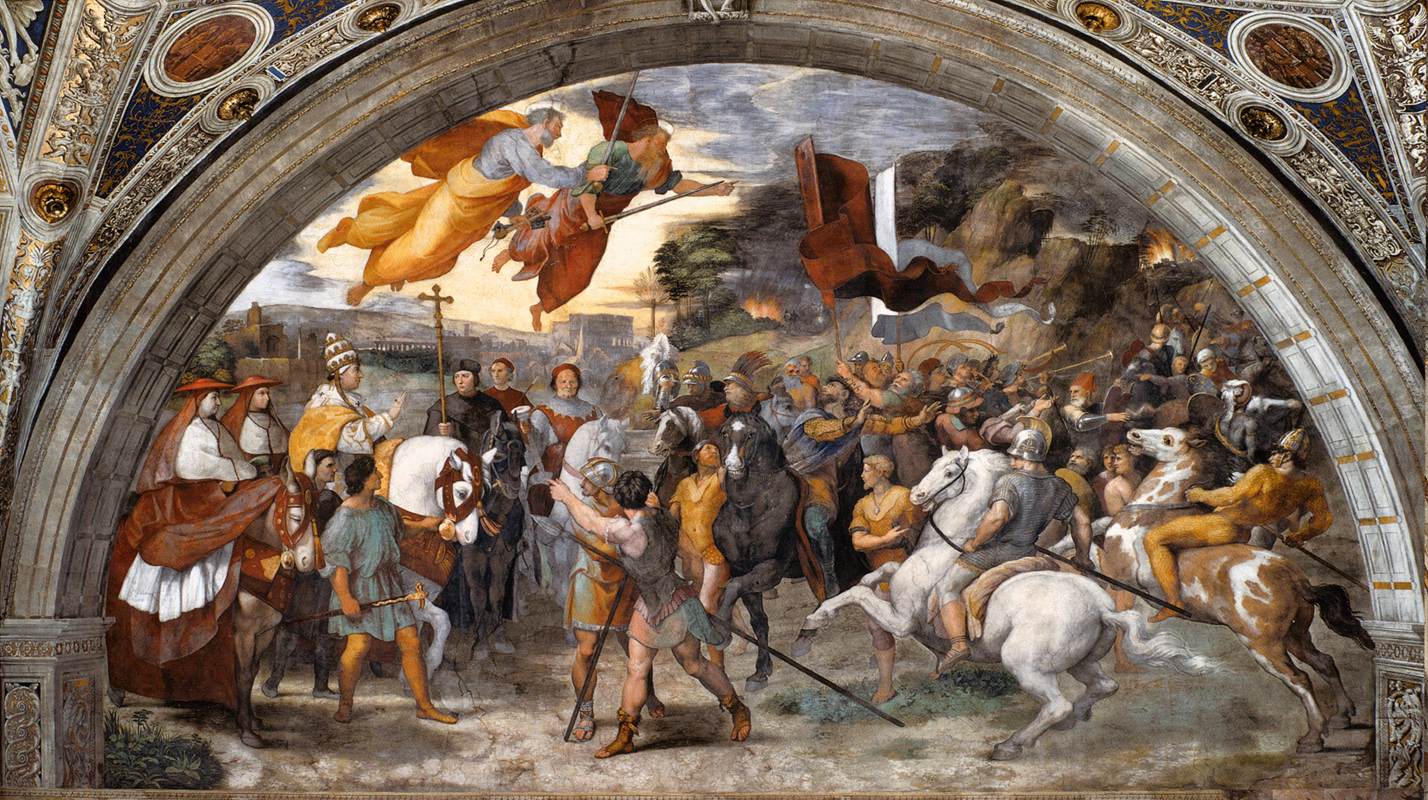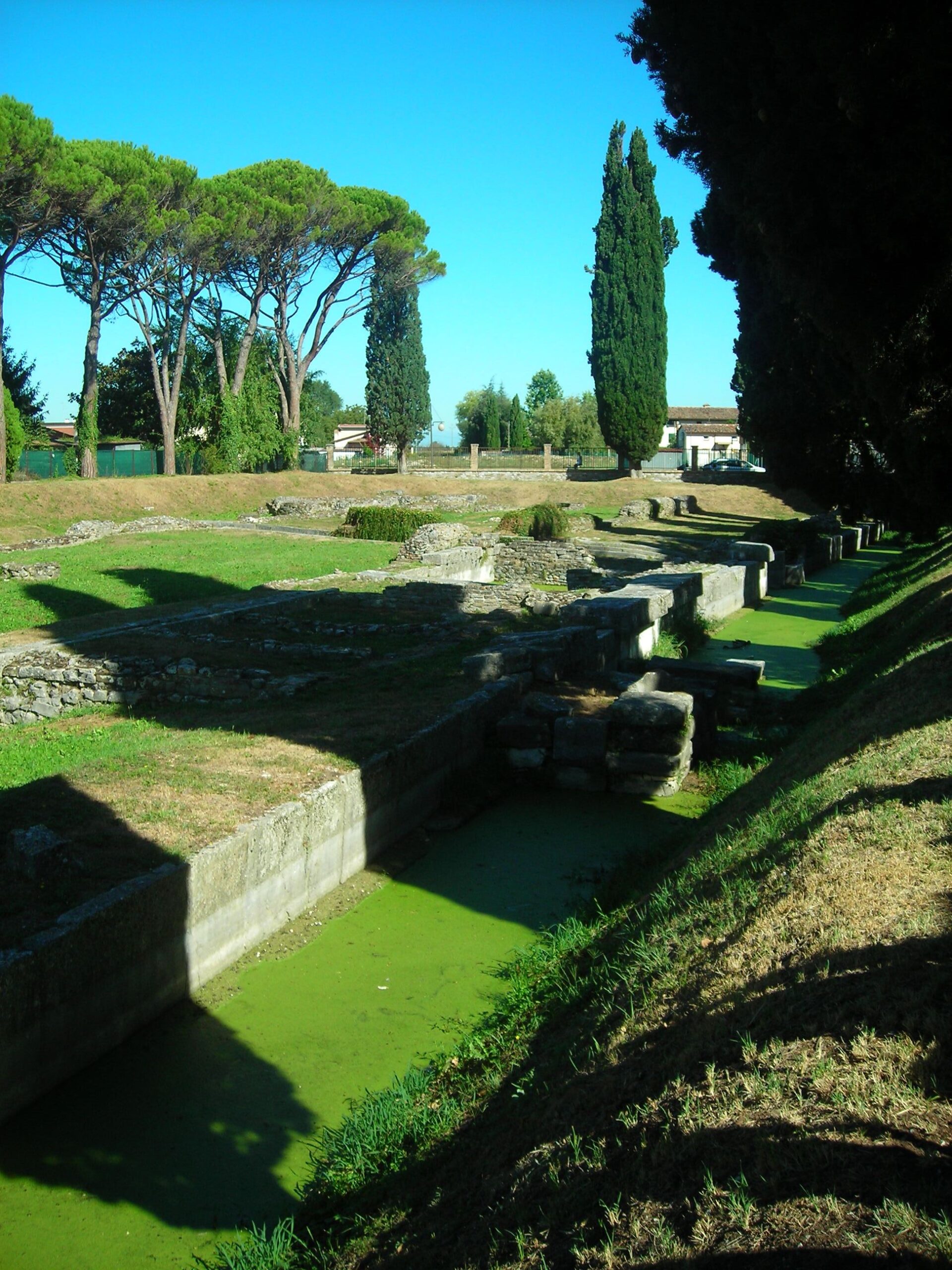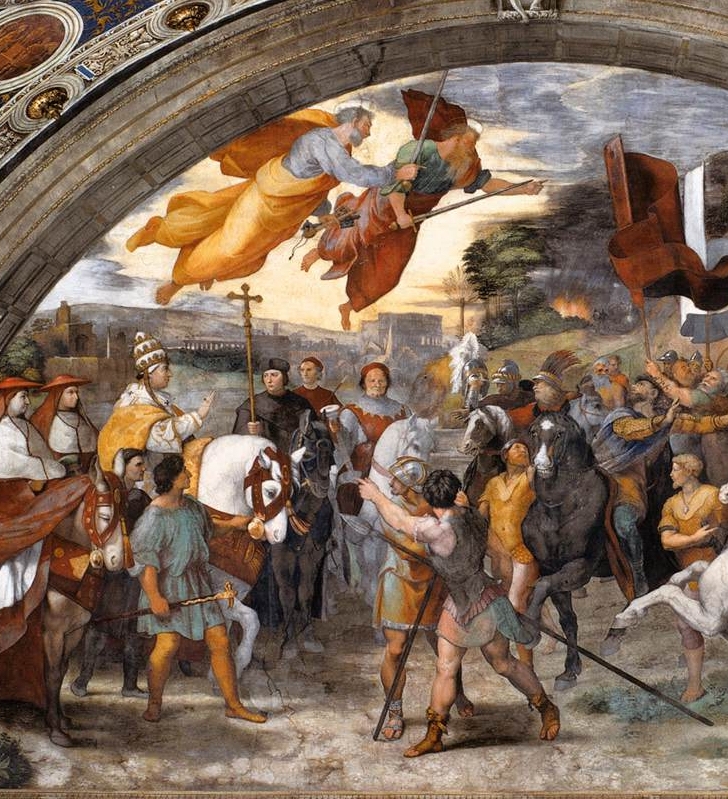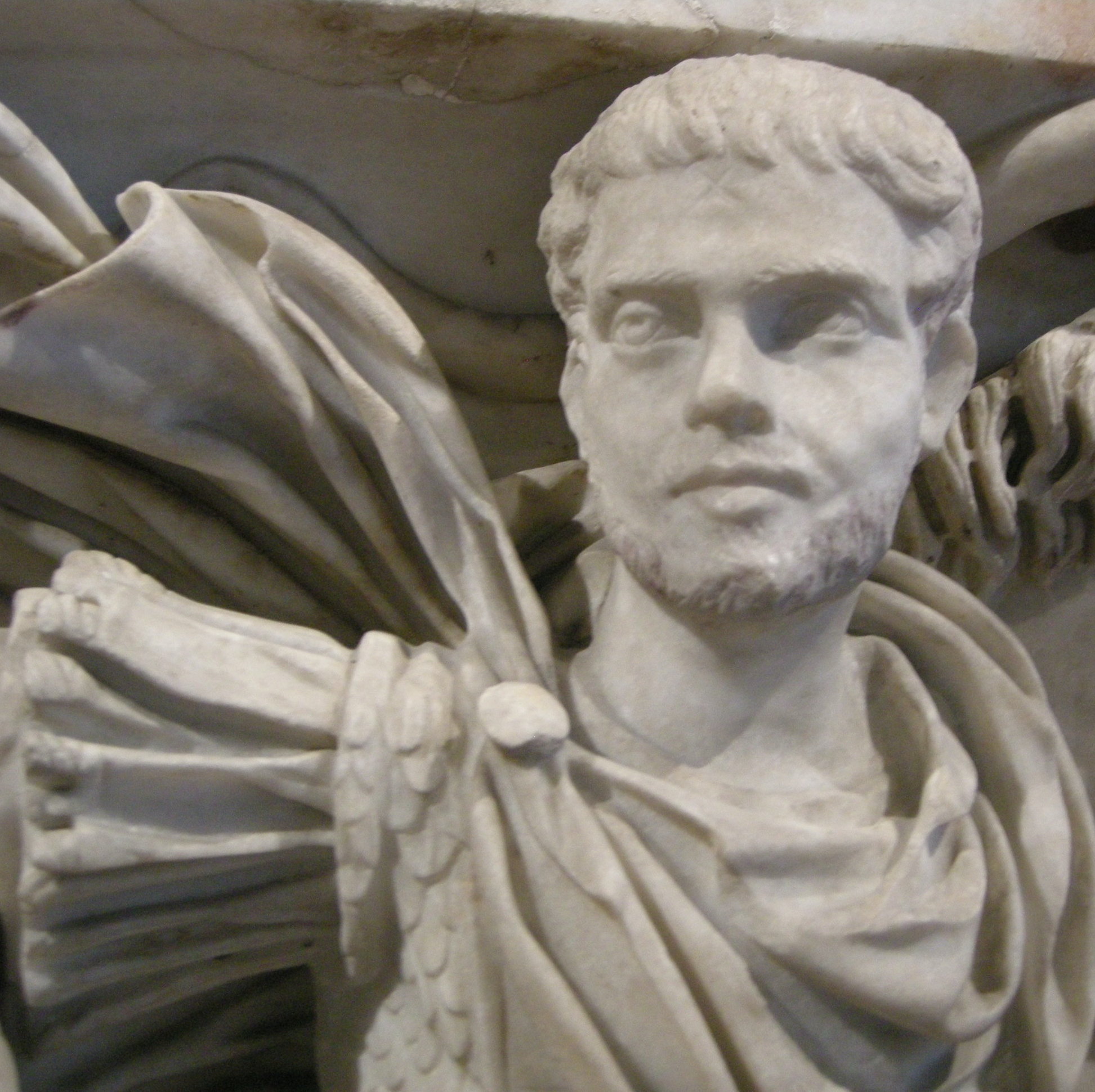A Portrait of Saint Patrick’s Generation

Where I have passed, the grass will never grow again.
―Attila the Hun
The Meeting between Pope Leo the Great and Attila, by Raphael in 1514.
Image from Wikipedia Commons.

CC License by Stanisław Gurba
Twilight of the Western Roman Empire
Saint Genevieve († 502/512 AD), Saint Leo the Great († 461 AD), and Attila the Hun († 453 AD) offer a profound portrait of Saint Patrick’s generation. Their world witnessed the gradual, yet inexorable disintegration of the Western Roman Empire. Those caught in the path of the violence fled not only for their lives, but for their entire way of life. Genocidal factions—even Roman armies on occasion—plundered, slaughtered, and torched much of the former civilisation. As Western Europe descended into Attila’s bloodthirsty darkness, however, the heroic courage of Saint Genevieve and Saint Leo the Great shone like beacons amid the storm.

Image from Wikipedia Commons.
Attila, Scourge of God
Known as Flagellum Dei—the “scourge of God”, Attila the Hun drenched Europe in blood, from the Balkans, along the Danube, as far west as Gaul, and even approaching Rome itself. Though relatively short-lived, his reign of terror drew a long, jagged scar over Western civilisation.
Dread of the Huns drove waves of refugees from their homelands and cities. Borders disintegrated; violence begot famine, economic crisis, and more violence. Many fleeing tribes became desperate and destructive vanquishers themselves. For example, the refugee Vandals ravaged and burned their way through western Europe and North Africa so that even today, we hear their name in destructive words like “vandalism.” In this way, the havoc and ruin spread by the Huns lasted for several centuries, long after Attila’s death.
A sagittis Hunorum, nos defende, Domine (From the arrows of the Huns, O Lord, protect us)!
―A prayer from this period
Spilling Blood as a form of Pagan Worship
Attila believed that he had been given the sword of Mars, the pagan god of war himself. Spilling blood with such a weapon, similar to pagan Irish weapons such as the bloodthirsty Spear of Celtchar, involved a spiritual element: the worship of violence.
Indeed, Attila’s hordes were feared more than any others because of their consummate lust for blood. For example, in 443 AD, Attila attacked the city of Naissus (now Nis, Serbia; where Saint Helena had mothered the young Emperor Constantine the Great), and massacred its inhabitants. Even five years later, as recalled by the visiting Roman historian and diplomat Priscus, the nearby riverbanks remained choked with human bones. Uneasy silence rested on the vacant homes of 150,000 people:
We found the city deserted, as though it had just been sacked…
Negotiating with a Terrorist
Priscus had been sent to negotiate with Attila, which he did, over dinner with the man. His impression was lasting:
He was a man born into the world to shake the nations, the scourge of all lands, who in a way frightened all mankind by the terrible rumours that were spread about him.
―Priscus, a Roman historian and diplomat who met Attila personally.

Image from Wikipedia Commons.
Saint Leo the Great, Pope of Rome († 461 AD)
Rather than fearing Attila, however, Saint Leo the Great, Pope of Rome, firmly opposed him with Christian faith. In 451 AD, when the Huns threatened to attack the city of Rome, Saint Leo rode out to meet Attila in person. Writing from the 8th century, Paul the Deacon relates that, during their meeting, warrior angels appeared to Attila above Saint Leo, as if to defend the Christian patriarch. Fearing divine punishment, Attila left the city in peace.
Saint Leo also saved many civilians from the Vandals, who plundered Rome in 455 AD. Terrified groups of people took shelter in the city’s numerous churches. For their sake, Saint Leo demanded, and was granted, papal protection.
Pope Leo the Great defended both his flock and his faith. At the Council of Chalcedon of 451 AD, he set forth the right understanding of Christ’s nature. Contradicting several confusing heresies, Saint Leo showed Jesus to be simultaneously fully divine and fully human. His eloquent explanation of the matter stands even to this day as a founding pillar of Orthodox Christian theology.
Did you know?

CC License by Angsthelm-christiane
Saint Genevieve of Paris († 502 AD)
Like Saint Leo, Saint Genevieve of Paris opposed the terror of her generation with courageous faith. As Attila threatened to make Paris his next trophy, approaching with his hordes on horseback, Saint Genevieve encouraged the Christians of Paris not to flee, but, rather, to pray. At the last minute, Attila changed his mind and did not attack Paris.
Later, as Paris lay besieged for ten years by the Frankish king Childeric I, Saint Genevieve took a boat beyond the siege lines to negotiate for the citizens, arrange ceasefires, and return with food. Surrounded by chronic food shortage and insecurity, Saint Genevieve fasted intensely, and only broke her fast twice a week. Childeric, though pagan, grew to love and respect the brave nun, and eventually called off the siege.
Saint Genevieve’s example inspired Childeric’s son and heir, Clovis I, to be baptised into Christianity. As one of the earliest political strongholds following Rome’s demise, the Christian Frankish kingdom would lead the way in reestablishing borders, safety, and, eventually—by inviting several missionaries in from Ireland—a flourishing Christian Church.

Photo from Wikipedia Commons.

CC License by Sailko.